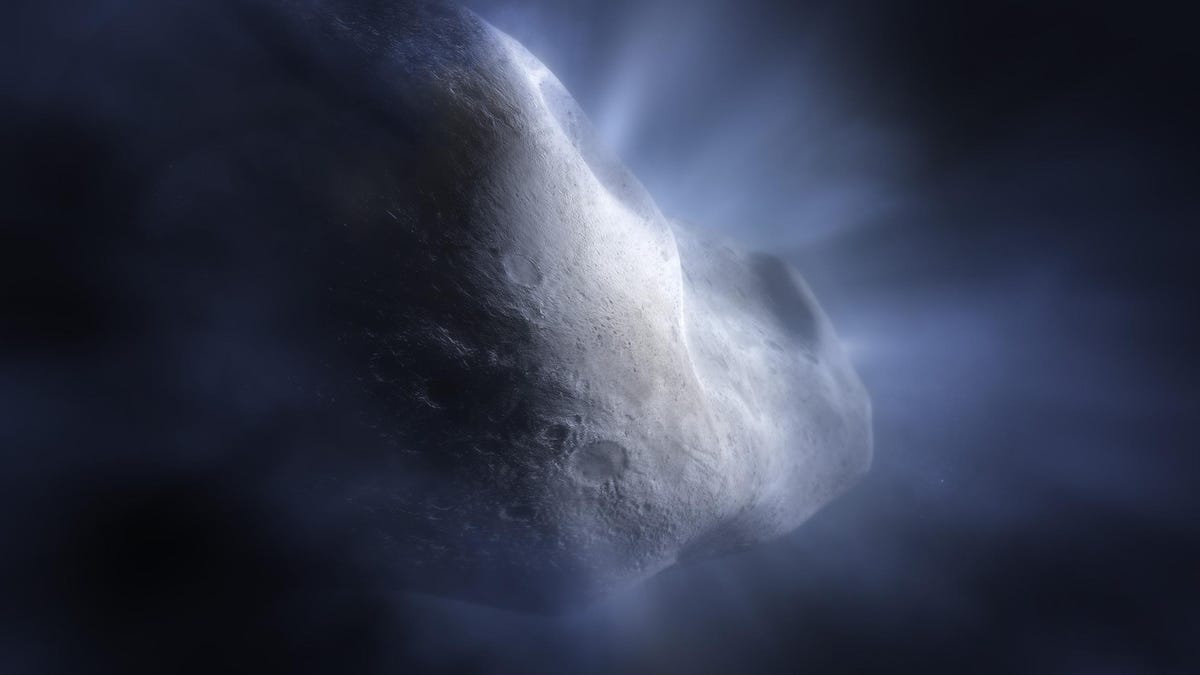The James Webb Space Telescope isn’t just about imaging distant galaxies. It’s also examining our solar system, and has found something new that could shed light on how Earth formed and where our planet got all its water. It’s a water-frozen comet orbiting near our planet, in the asteroid belt between Mars and Jupiter.
That comets are rich in water is nothing new, but the comets we have examined so far either come from outside our solar system or orbit the sun billions of kilometers from our star, in regions on the fringes of our system. Like the Kuiper belt. Or the Oort Cloud, beyond Pluto. Astronomers speculated on the possibility that a water-icy comet might be closer to the Sun, but had never tested this theory before. This is where the comet reading comes into play.
Read Quietly orbits the Sun in the asteroid belt between Mars and Jupiter, surrounded by a halo of gas and dust. By analyzing this halo with its infrared instruments, James Webb discovered that the cloud surrounding the comet was in fact composed of water vapor. To make matters even stranger, there is no carbon dioxide, which is a common substance found in other comets.
The findings of the discovery have just been published in the journal nature. The lead author, University of Maryland astronomer Mike Kelly details the discovery in an article posted on the website of a pot:”In the past, we’ve seen major belt bodies that have all the characteristics of comets, but only with this precise spectral data from Webb can we say yes, it’s definitely water ice that creates this effect. “
The discovery is particularly important because researchers estimate that the water from Comet Read is about 4.5 billion years old. Thus, their analysis will allow for a better understanding of how water got into the solar system during its formation and how that water ended up on planets like Earth or moons like Europa.
said Stephanie Milam, a Webb Telescope Associate Project scientist in planetary sciences and co-author of the study reporting the findings. “Understanding the history of water distribution in the solar system will help us understand other planetary systems and whether they are on their way to hosting an Earth-like planet,” he added. How can Comet Read not contain carbon dioxide? “Being in the asteroid belt for a long time can cause this: carbon dioxide evaporates more easily than water ice, and it would have seeped inward for billions of years,” Kelly said. Another option, he said, is that Comet Red may have formed in a particularly hot pocket in the solar system, where carbon dioxide is not available.
At Gizmodo, we contacted the study authors for more information on the finding.

“Proud web fanatic. Subtly charming twitter geek. Reader. Internet trailblazer. Music buff.”




:quality(85)/cloudfront-us-east-1.images.arcpublishing.com/infobae/SXDWOIO7O5FMZOWUATFEXQYWTY.jpg)


More Stories
Astronauts stranded in space due to Boeing spacecraft malfunction won’t be able to return home for weeks
Download YoWhatsApp Plus 2024 Latest Updated APK for Android | WhatsApp Plus APK
What was it like to spend a year on NASA’s Mars simulation base?